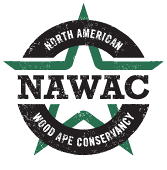To a great number of Texans, the mere mention of the “Trans-Texas Corridor” evokes a strong reaction. Indeed, it’s not uncommon when driving along a Texas highway through rural communities in Central and East Texas to see large signs posted on farms and ranches informing the Texas Department of Transportation (TxDOT) that their proposed “Trans-Texas Corridor” is not welcome.
Due to dramatically-increased population and motor vehicle numbers for Texas over the last two decades, and prognostications of even greater growth and transportation demands, the Trans-Texas Corridor project involves the creation of a “21st century, multi-modal transportation system” primarily for reducing congestion, among other things.
Some did not take it too kindly when they learned that such a project would likely be carved through rich Central Texas farmlands or precious East Texas critical-habitat timberlands. Congressman Kevin Brady (R) led several other Texas congressmen and women in urging TxDOT to abandon the Trans-Texas Corridor in favor of pursuing the original I-69 Project, which first began 15 years ago, long before the Trans-Texas Corridor was proposed.
The I-69 Project would involve upgrading already-existing US Highway 59 (through East Texas), US Highway 77 (through South and Central Texas) and US Highway 281 (through South and Central Texas) to interstate highway standards.
It now appears that TxDOT heard the call from Congressman Brady and his cohorts, as well as 28,000 comments from concerned Texans. On June 11, 2008, TxDOT announced that it would recommend to the Federal Highway Administration to use existing highways wherever possible in the development of the I-69/Trans-Texas Corridor.
TxDOT could take the project one step further toward respecting critical wildlife habitat and travel corridors by incorporating wildlife passage structures into the project. Such structures are in use elsewhere in North America.
The wildlife crossings serve to minimize the disruption of wildlife movements, reduce the number of collisions between motor vehicles and wildlife and also help to connect parceled wildlife habitat zones. Such wildlife crossing projects have proven successful in other areas of the continent. There is no reason why they could not work in Texas as part of the I-69/Trans-Texas Corridor.
Perhaps Congressman Brady will once again show leadership by encouraging TxDOT to consider incorporating a substantial wildlife crossings project into the I-69/Trans-Texas Corridor.
Sources: Texas Department of Transportation. KBTX.com. TxDOT Has a Plan. The Banff Wildlife Crossings Project Report, 2002.
